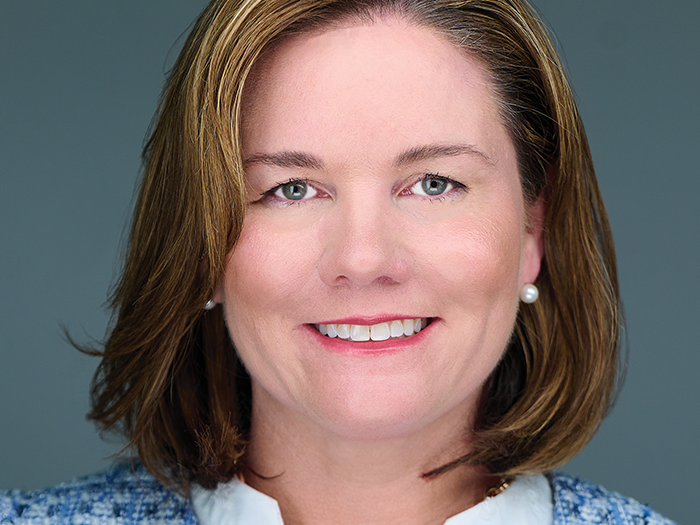Program Business
Program Business Administrators Outpace Market

The financial performance of commercial property/casualty insurance program administrators continues to outpace the performance of the overall property casualty insurance markets, according to the Target Markets Program Administrators Association.
The TMPAA’s latest annual survey revealed that program business premium revenues increased by 9.8 percent reaching $30.1 billion in 2013, up from $27.4 billion in 2012.
That’s compared to a 4.6 percent increase in direct premiums written for the overall commercial lines marketplace.
“Carriers are attracted to program administrators for several reasons, the biggest being the segment’s ability to outperform the general marketplace through focused underwriting and deep understanding of the industries being served by expert underwriters,” said David Springer, group president and COO of NIP Group, who also serves as president of the TMPAA.
“Additionally, it is a more efficient distribution model for a carrier as they can ‘pick up’ volume through a single source rather than building distribution in a class over time,” he said.
Chris Pesce, president of Maritime Program Group and a member of the TMPAA Advisory Board, said the success of the program business is driven by “two specific reasons.”
“Firstly, there’s a record amount of capacity in the market that needs to get deployed,” he said.
“Carriers have the capacity and desire to grow and expand but often lack the distribution. The PA model allows the carrier to quickly gain traction in a niche industry segment for which they had no prior experience.
“Through the PA, they get immediate penetration with the retail distribution that’s driving that class of business without having to incur the expense of finding them one over one.
“For example, a commercial auto underwriter isn’t likely to succeed as a yacht underwriter.” — Chris Pesce, president of Maritime Program Group and a member of the TMPAA Advisory Board
“Secondly, the PAs typically engage in a niche class for which they develop a deep expertise and often a personal passion.
“From an underwriting perspective, this leads to a much more intimate knowledge of that class and understanding of how to underwrite the class profitably. This is hard for the carrier to replicate using staff underwriters that have no specific passion or expertise directly in the class of business they’re underwriting.
“For example, a commercial auto underwriter isn’t likely to succeed as a yacht underwriter,” Pesce said.
“In addition, the overall acquisition cost of utilizing a PA is more attractive than trying to build a profitable portfolio organically when contemplating the cost of building the retail distribution, underwriting talent and systems support. If a PA brings all of that to the table, it’s a compelling model for the carrier to consider.”
However, a number of challenges were also identified by the study, including technology, which was highlighted by both administrators and carriers as one of the top issues facing the program space.
“Technology, when deployed effectively, can be a game-changer,” Springer said, but he noted program underwriting operations “can be expensive to run and interaction with carrier systems can be very manual.”
“Deployment of technologies that can gather and move information into and out of our agency management, rating, policywriting and CRM solutions can generate big expense savings over time, which help program administrators reach their full potential.”
“The required experience and skills,” he said, “are as unique as the niches the programs serve and finding the right talent — or growing it — can be difficult.” — David Springer, group president and COO of NIP Group, and president of the TMPAA
Pricing is another challenge.
“With so much capacity in the market and cheap reinsurance that’s overly abundant, there will be continued pricing pressure in all directions,” Pesce said.
“Unfortunately, the market entrants that have capacity to deploy will inevitably buy their way into the desired market share at pricing that is often unsustainable until the results catch up to the portfolio, which often takes years, not months.
“This all means continued downward pressure on pricing for the foreseeable future,” he said.
The survey highlighted a number of talent recruitment and training differences between insurers and brokers, especially as related to professional certifications.
And, according to the study, hiring and retaining qualified personnel in the program space continues to be a major challenge — with administrators saying they are boosting training programs to better support the needs of both new and experienced underwriters.
“Nearly half of the administrators polled do not require their applicants to have professional designations,” according to the study. “Thirty-six percent say they prefer underwriters with professional designations and will pay more, while 21 percent prefer underwriters to have professional designations, but will not pay more.
“In the case of insurers, half of those polled prefer underwriters with professional designations and are willing to pay more. Thirty-seven percent of the respondents do not require their applicants to have professional designations, while 13 percent prefer underwriters with professional designations, but will not pay extra.”
Springer said “scale and funding” could explain that difference of opinion.
“It is interesting that positions with expertise in program administrator shops are some of the hardest to find good candidates for but most program administrators don’t have the resources that a carrier does when engaging in recruitment or even formalized training programs to grow future talent.
“That is one of the driving forces behind the investment our association has made in Target University — where we endeavor to make available education to program administrator teams and the carriers and vendors that serve them.
“The required experience and skills,” he said, “are as unique as the niches the programs serve and finding the right talent — or growing it — can be difficult.”










